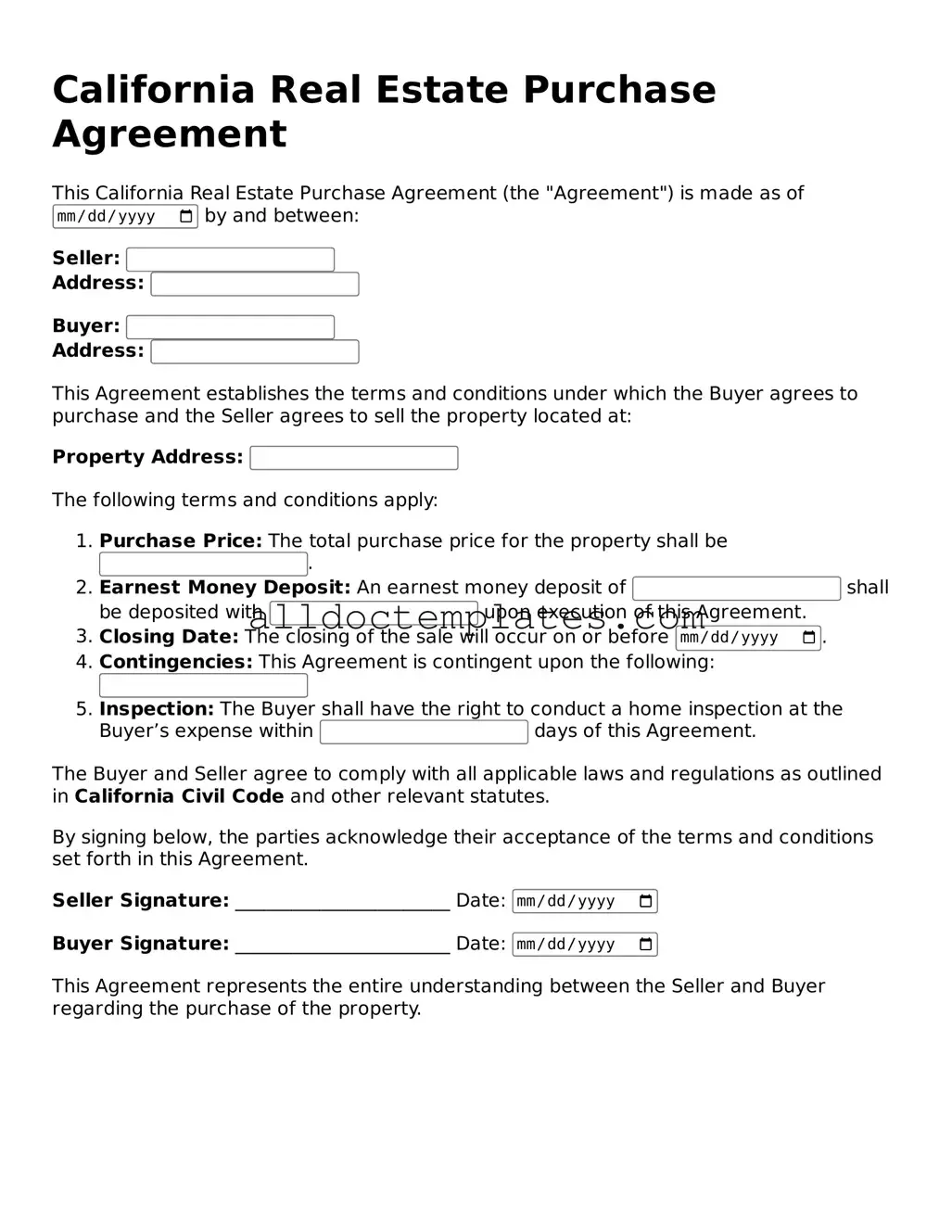Free Real Estate Purchase Agreement Document for California State
The California Real Estate Purchase Agreement form is a crucial document that outlines the terms and conditions of a real estate transaction in California. This legally binding contract protects the interests of both buyers and sellers, ensuring clarity and mutual understanding throughout the process. Familiarity with this form is essential for anyone looking to navigate the complexities of California's real estate market.
Get Your Form Now
